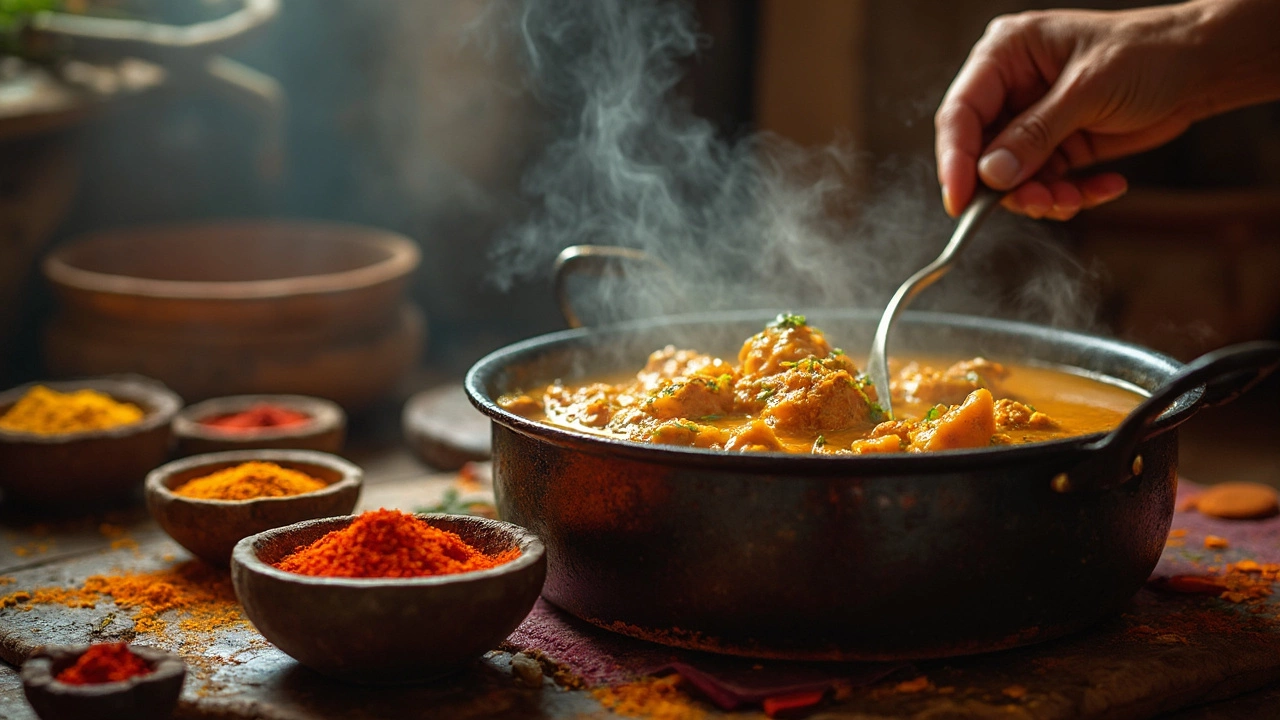Flavor Depth: Simple Tricks to Make Indian Dishes Taste Bigger
If you ever wonder why some biryani or chutney hits the spot while other versions fall flat, it’s all about flavor depth. It’s not magic – it’s the way you layer spices, balance heat, and time each ingredient. Below you’ll find down‑to‑earth tips that work right now, whether you’re cooking a quick curry or a weekend feast.
Why Flavor Depth Matters
Flavor depth is the difference between a one‑note taste and a dish that keeps you guessing with every bite. When you stack layers – think toasted cumin, fresh curry leaves, and a splash of tamarind – your palate picks up subtle notes that linger. This is why biryani feels so rich: each spice (cardamom, cloves, peppercorns) releases its aroma at a different stage, building a complex profile that feels luxurious without extra calories.
Even simple foods like chutney get a boost when you control heat and moisture. Cooking chutney with the lid off lets excess steam escape, thickening the mix and concentrating flavors. A lid‑on method traps steam, diluting the punch. Knowing these tiny changes helps you avoid a watery, bland side.
Easy Ways to Build Deeper Flavors
1. Toast Spices Early. Dry‑roast whole spices in a pan for 30‑45 seconds until fragrant. This awakens essential oils and adds a nutty undertone. After toasting, grind them fresh – a grinder or mortar‑pestle works best.
2. Use a Flavor Base. Start every curry with a combination of onions, ginger, garlic, and tomatoes cooked low and slow. This “masala” foundation creates a sweet‑savory backdrop that lets later spices shine.
3. Add Acid at the Right Time. A splash of lemon juice, tamarind paste, or even a pinch of amchur (dry mango powder) near the end brightens the dish and cuts through richness. It also balances bitterness that can hide in over‑spiced sauces.
4. Finish with Fresh Herbs. Sprinkle chopped cilantro, curry leaves, or mint just before serving. Fresh herbs add a burst of green aroma that lifts heavy, spiced dishes.
5. Layer Heat. Use a mild chili early (like Kashmiri red) for color, then finish with a hotter variety (like bird’s eye) right before plating. This keeps the heat noticeable but not overwhelming.
Bonus tip: When you see “black things” in biryani, don’t panic. Those are whole spices like black cardamom, cloves, or peppercorns that release deep, smoky notes. You can chew them for extra punch or remove them if you prefer a cleaner bite.
Putting these steps together doesn’t require a culinary degree. Start with one dish – maybe your favorite biryani – and apply each tip one by one. You’ll notice the difference instantly, and the same principles work across soups, salads, and even quick snacks like popcorn or roasted nuts.
Remember, flavor depth is about patience and respect for each ingredient. A few extra seconds of toasting, a pinch of acid, and a fresh herb finish can turn a good recipe into a standout meal you’ll want to share with friends and family.
Unveiling Depth in Chicken Curry
Crafting a chicken curry with depth isn't just about following a recipe—it's about understanding the secrets behind its rich and complex taste. This article delves into the essential elements that contribute to curry's depth, from the choice of spices to the intricacies of slow cooking. Discover tips and traditional techniques to transform your curry into a culinary masterpiece. Learn how to balance flavors and create a rich, satisfying dish that pleases every palate.
